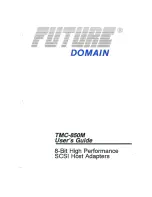
Scenario 1:1 – Simple vNet with Active/Standby Uplinks and Optional Link Aggregation 802.3ad (LACP) - Windows 13
Scenario 1:1 – Simple vNet with Active/Standby
Uplinks and Optional Link Aggregation 802.3ad
(LACP) - Windows
Overview
This simple configuration uses the Virtual Connect vNet. The vNet is the simplest way to connect Virtual
Connect to a network and server. In this scenario, the upstream network switch connects a network to a
single port on each VC module.
No special upstream switch configuration is required as the switch is in the factory default configuration,
typically configured as an Access ports.
When configuring Virtual Connect, we can provide several ways to implement network fail-over or
redundancy. One option would be to connect TWO uplinks to a single vNet; those two uplinks would
connect from different Virtual Connect modules within the enclosure and could then connect to the same
upstream switch or two different upstream switches, depending on your redundancy needs. An
alternative would be to configure TWO separate vNets, each with a single uplink configured. Each
option has its advantages and disadvantages. We will review the first option in this scenario.
In addition, several vNets can be configured to support the required networks to the servers within the
BladeSystem enclosure. These networks could be used to separate the various network traffic, such as
iSCSI, backup, VMotion from production network traffic.
Requirements
In order to implement this scenario, an HP BladeSystem c7000 enclosure with one or more server blades
and TWO Virtual Connect Ethernet modules, installed in Bays 1& 2 are required. In addition, we will
require ONE or TWO external Network switches. As Virtual Connect does not appear to the network as
a switch and is transparent to the network, any standard managed switch will work with Virtual Connect.














































